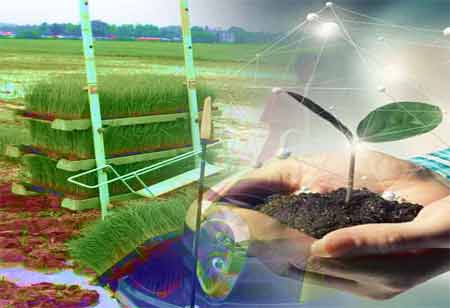Thank you for Subscribing to Agri Business Review Weekly Brief
Top 3 Trends in Precision Agriculture
Precision agriculture (precision farming) has several definitions. These are important for understanding the relationship between technologies and critical agricultural operations like crop growing,

By
Agri Business Review | Monday, June 03, 2024
Stay ahead of the industry with exclusive feature stories on the top companies, expert insights and the latest news delivered straight to your inbox. Subscribe today.
Bringing digital change to the agricultural sector is challenging but rewarding. Increasing earnings and productivity are secondary goals compared to technology's accuracy-boosting potential and revolutionary role in assisting businesses in meeting new requirements in the era of sustainable agriculture. As a result, current farming technology is frequently cited in conjunction with precision agriculture software—a technological movement toward the new mentality.
Fremont, CA: Precision agriculture (precision farming) has several definitions. These are important for understanding the relationship between technologies and critical agricultural operations like crop growing, cattle management, and harvest analytics.
Precision farming is a scientific term that refers to improving crop management through modern technological solutions. It is a relatively new topic being studied around the world to meet modern difficulties and increase crop yields through improved irrigation systems, fertilizer management, and the collection of more critical data through the use of innovative technologies. This scientific field transforms agricultural techniques by emphasizing the value of information and providing farmers with tools and systems for data collection and analysis.
Precision farming is frequently considered an approach to increasing control over all crop management and agriculture aspects. It began in the 1990s when sectors began to reap the benefits of GPS technology, and it continues to explore innovation and apply the newest digital transformation trends and technologies to agricultural difficulties and demands. This technique aims to reduce human error, reduce unnecessary resource usage, and open new farmer revenue streams.
The term "precision agriculture" refers to a wide range of technology and products aimed at enhancing various agricultural activities and processes. Any tech solution that can optimize and boost crop farming efficiency, enable harvest forecasting, or add additional data to crop yield analysis is part of the comprehensive framework committed to improving agricultural practices and introducing new, efficient approaches.
The following are the primary agricultural trends that influence the priorities and practices of sector decision-makers and organizations:
Climate Change
As climatic conditions vary in an unpredictable pattern and heat waves become more common, the challenge is to establish more adaptive and robust farming models and make farming available to a wider range of places.
Consumer Agenda
Agriculture, like other industries, has experienced an increase in modern consumer demands. Buyers expect to make more educated and responsible decisions about the items they purchase and receive high-quality products. As a result, they prefer suppliers who prioritize openness and product traceability.
Population Growth
With the world's population expected to exceed 9.5 billion by 2050, agriculture organizations, farmers, and businesses must prioritize boosting production while reducing resource use. A global endeavor to expedite food production operations and ensure uninterrupted processes drives the hunt for techniques and technology to eliminate redundancies and uncover new agricultural benefits.





